13 ways the horror genre has radically changed
How has the genre of horror movies changed over the past 120 years?
For the past year, I have been crunching the numbers on all aspects of horror movies.
The end result is the Horror Movie Report - an epic study of all 27,000+ horror films ever made through the lens of data, covering the whole journey from concept through to profitability.
To celebrate Halloween, I have collected thirteen ways the horror genre has changed over the years.
1. Heros die less often
If we track the fate of the main characters in horror movies over the past 100 years we see an interesting trend. The main character of the movie is less likely to die, but the fate of the other major characters is increasingly worse.
2. Helping the hero is an increasingly bad idea
Following on from the previous chart, if we narrow to just the allies of the hero we see an even more dramatic state of affairs.
Helping a hero in a horror film in the first half of the 20th century was a fairly safe choice, but by the turn of the 21st century, death rates had more than tripled.
3. Critics and audiences are disagreeing more
Horror has never been a genre in which the view of film critics matters all that much. (In the Horror Movie Report, I show how there is no meaningful correlation between the view of film critics and a horror movie’s chance of turning a profit).
But there is another way in which the view of film critics matters less for horror than every other genre - namely, as a barometer of public opinion. Over the past quarter century, the views of film critics and film audiences are increasingly diverging.
4. Horror has adapted to views of mental health
One of the myriad ways that horror movies reflect the time they were made in is what’s to blame for the ensuing cases. In the case of body horror, attacks on the human brain have fallen considerably over the years.
Fear of a generic “madness” has given way to a more nuanced understanding of why people can be driven to heinous acts.
5. Animals are less likely to be ‘The Problem’
Animal monsts feature less frequently in horror movies than they used to. this could be a response to increased environmentalism in the world or the ability for modern movies to use VFGX to make more complex villains/threats.
6. Young adults are increasingly the victims
Across all horror slasher movies I studied, young adults make up 45.3% of victims. A large number of those victims were attacked / killed / generally bothered in the 2000s.
7. Actors are getting older
In the past few decades we seen a clear growth in the average age of actors in horror movies.
In the 20th century, this was a reasonably consistent figure, staying between 37 and 41 on a decade-long basis. However, in the 21st century, the figure has started to trend up, with the top actors of horror movies released between 2020 and 2023 being 45.8 years old.
8. Things have become a little bit pun-y
Althought we think of them as a stable of the genre, humourous horror movie titles only really started to emerge in the second half of the 20th century.
Some of the titles I’ve enjoyed during my research include:
Someone Down There Likes Me (1974)
Dracula: Dead and Loving It (1995)
Witching and Bitching (2013)
Attack of the Killer Tomatoes! (1978)
Stan Helsing (2009)
Repossessed (1990)
Dead & Breakfast (2004)
ThanksKilling (2008)
Sorority Babes in the Slimeball Bowl-ORama (1988)
The Cars That Ate Paris (1974)
Die Hard Dracula (1998)
Aaah! Zombies!! (2007)
Cannibal Women in the Avocado Jungle of Death (1989)
9. There has been an explosion in horror movie production
1970 was the first year that worldwide production of horror movies hit triple figures (110 horror movies made that year). It took another seventeen years to reach above 200.
The high point of the 20th century came in 1988 when 275 horror movies were made. The softening of production figures in the 1990s led some to assume the horror bubble had popped, whereas, in fact, the 21st century saw another massive growth spurt.
In the past few years, production levels have exceeded 1,500 horror movies annually — five times the figure of just twenty years prior.
10. It’s become (a bit) less of a boys club
Women accounted for well under 10% of horror creatives during the middle of the past century. Participation increased from around the 1970s and has risen steadily since.
Most recently, from 2020 to 2023, women accounted for 14.5% of horror directors.
If you are keen to watch more horror directed by women, then here are a few suggestions of movies to check out:
American Psycho (2000) - Directed by Mary Harron, this movie explores the life of a wealthy New York investment banker with a dark secret.
Bird Box (2018) - Susanne Bier directed this tense post-apocalyptic thriller in which unseen entities drive people to deadly madness.
The Babadook (2014) - Jennifer Kent’s directorial debut delves into the psychological horror of a mother and son haunted by a sinister presence.
Jennifer’s Body (2009) - Karyn Kusama offers a darkly comedic take on the horror genre with this story of a high school girl possessed by a demon.
Carrie (2013) - Kimberly Peirce’s remake of the classic Stephen King tale focuses on a bullied high school girl with telekinetic powers.
The Invitation (2015) - Another entry from Karyn Kusama; this movie is a slow-burn thriller about a dinner party with dark undertones.
Red Riding Hood (2011) - Catherine Hardwicke reimagines the classic fairy tale with a gothic horror twist.
Pet Sematary (1989) - Directed by Mary Lambert, this adaptation of Stephen King’s novel explores the horrors of bringing the dead back to life.
Fear Street: Part One - 1994 (2021) - Leigh Janiak directs this first instalment of a trilogy based on R.L. Stine’s horror series.
11. The clowns have descended
Clowns have become a much more frequent sight in horror films over the past few decades. Early examples, like He Who Gets Slapped (1924), introduced the unsettling figure of the clown, but it wasn’t until later that the character became a popular horror antagonist (and this isn’t a horror mvoie the way we think of it today).
The shift can be traced to the success of Stephen King's It (1990), where Pennywise the clown terrified a generation. Since then, clown-based horror has grown significantly, with notable examples like Killer Klowns from Outer Space (1988), Stitches (2012), and the It remake in 2017.
12. It takes so many more people to make a horror movie
The average crew size of horror movies has doubled since the 1960s when it took an average of just 60 people (cast and crew) to make a horror movie.
13. More horror movies are dedicated to someone
The idea of mentioning someone in the credits of a movie is a relatively new idea. Before the 1980s, it was very rare to see a horror movie which was dedicated to a person, whereas it’s now just under 2% of such films.
The two people to whom the most significant number of horror movies are dedicated are Edward D. Wood Jr and Doris Wishman, with five dedications each.
The Horror Movie Report is over 400 pages of things like this. If you dig stats and horror movies then head over to HorrorMovieReport.com and grab your copy.




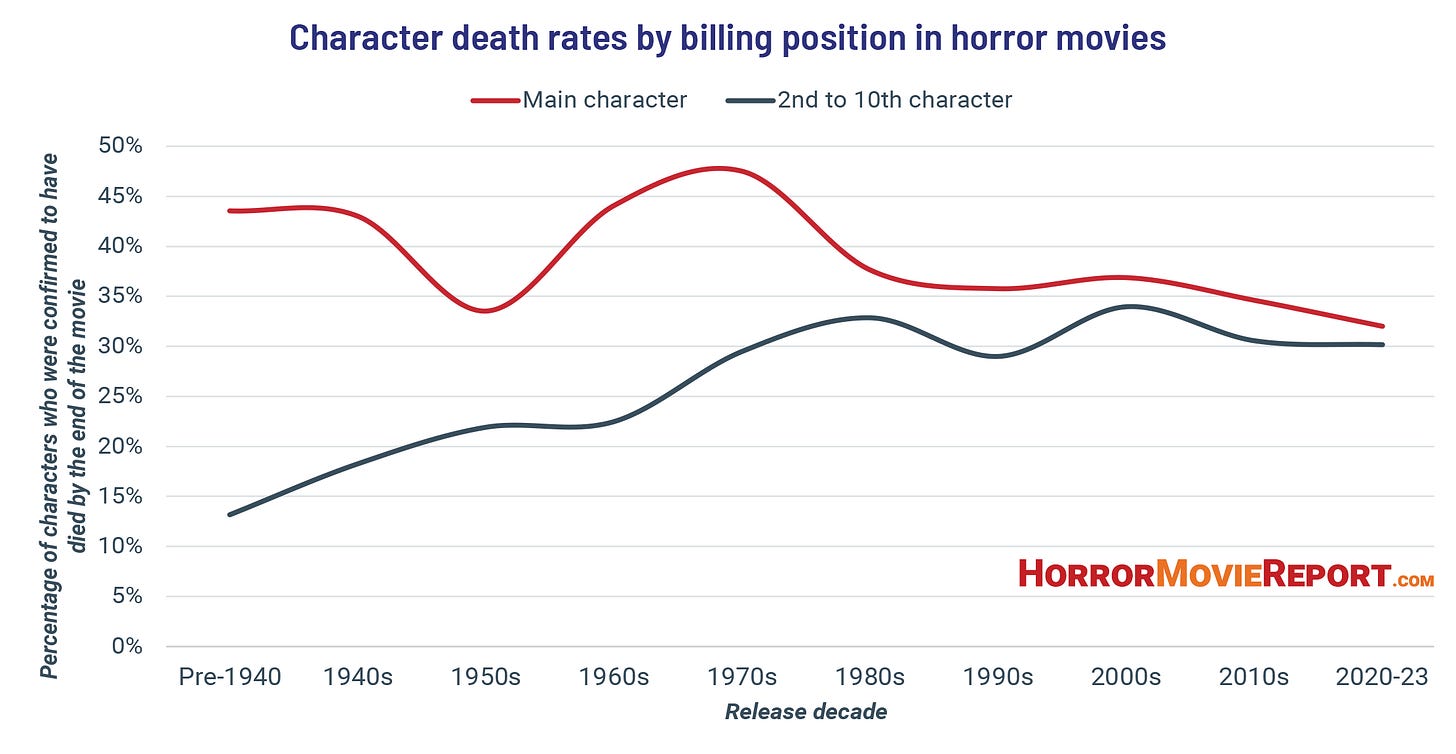
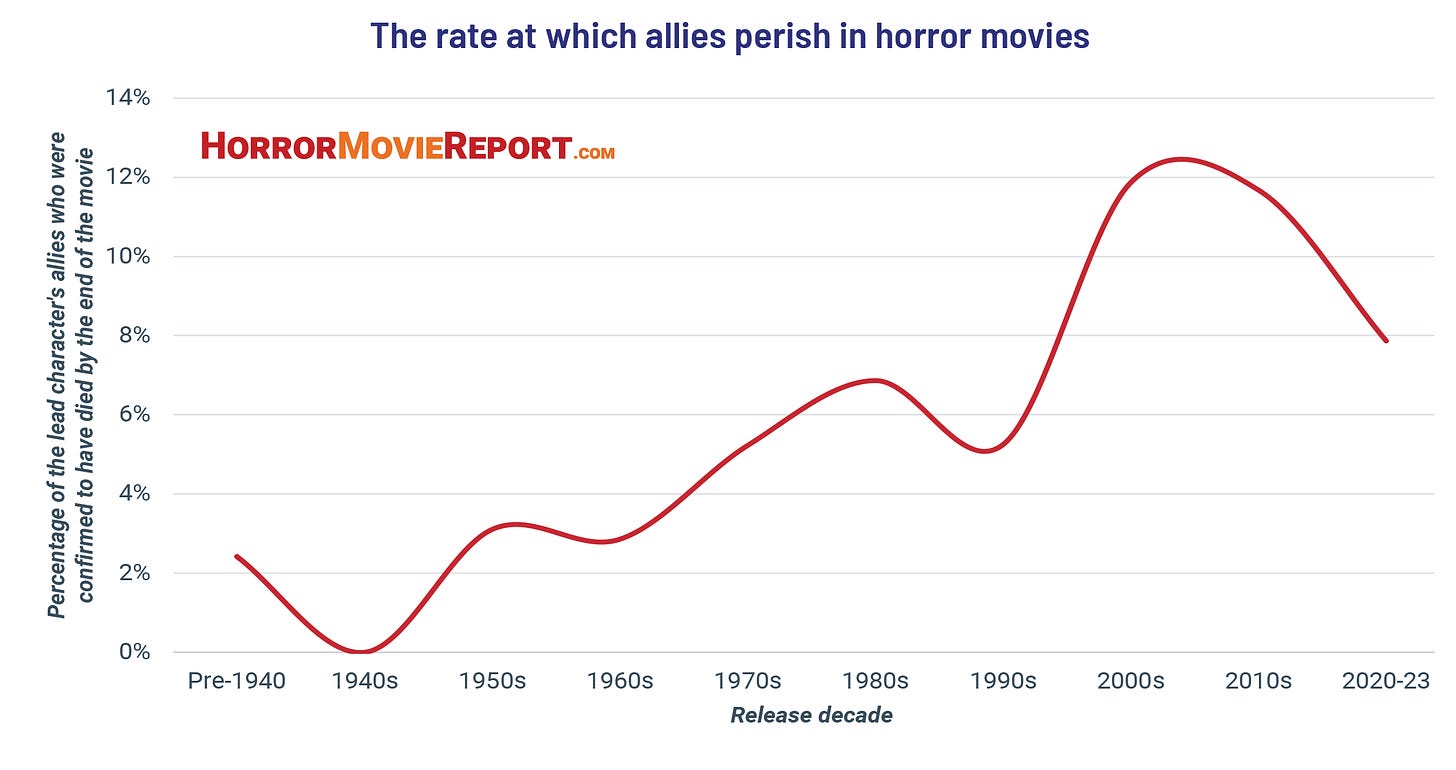




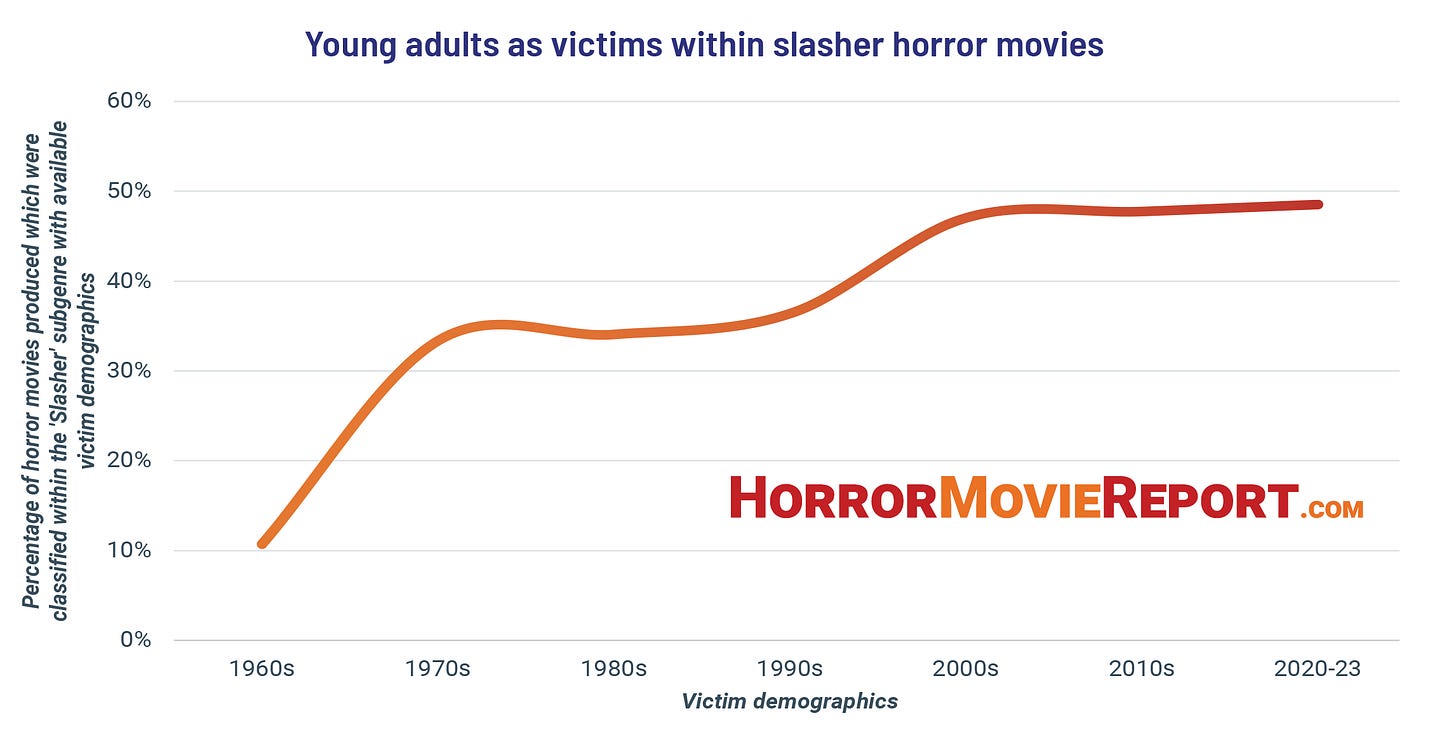
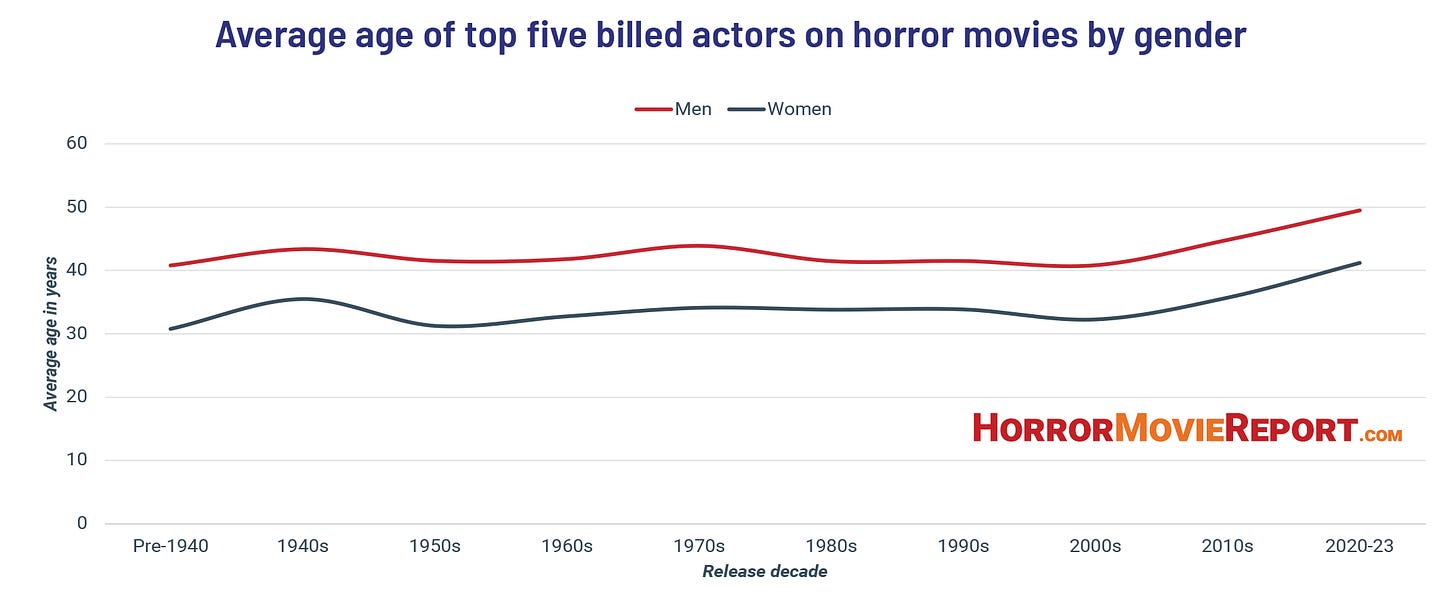



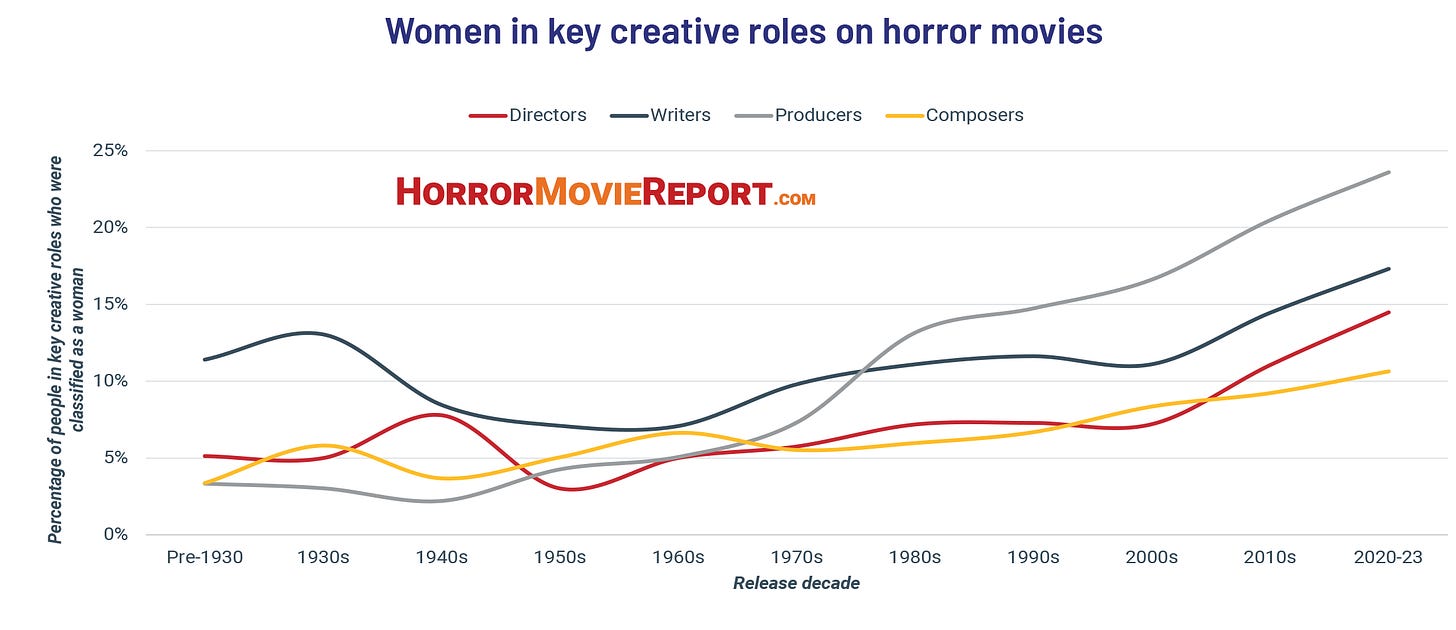




Fascinating. I can only contribute by adding to your female director list.
Dir Julia Ducournau - Raw
Dir Beth de Araújo - Soft and Quiet
Dir Rose Glass - Saint Maud
Dir Arkasha Stevenson - The First Omen
Dir Ana Lily Amirpour - A Girl Walks Home Alone At Night
Co-dir Veronika Franz - Goodnight Mommy